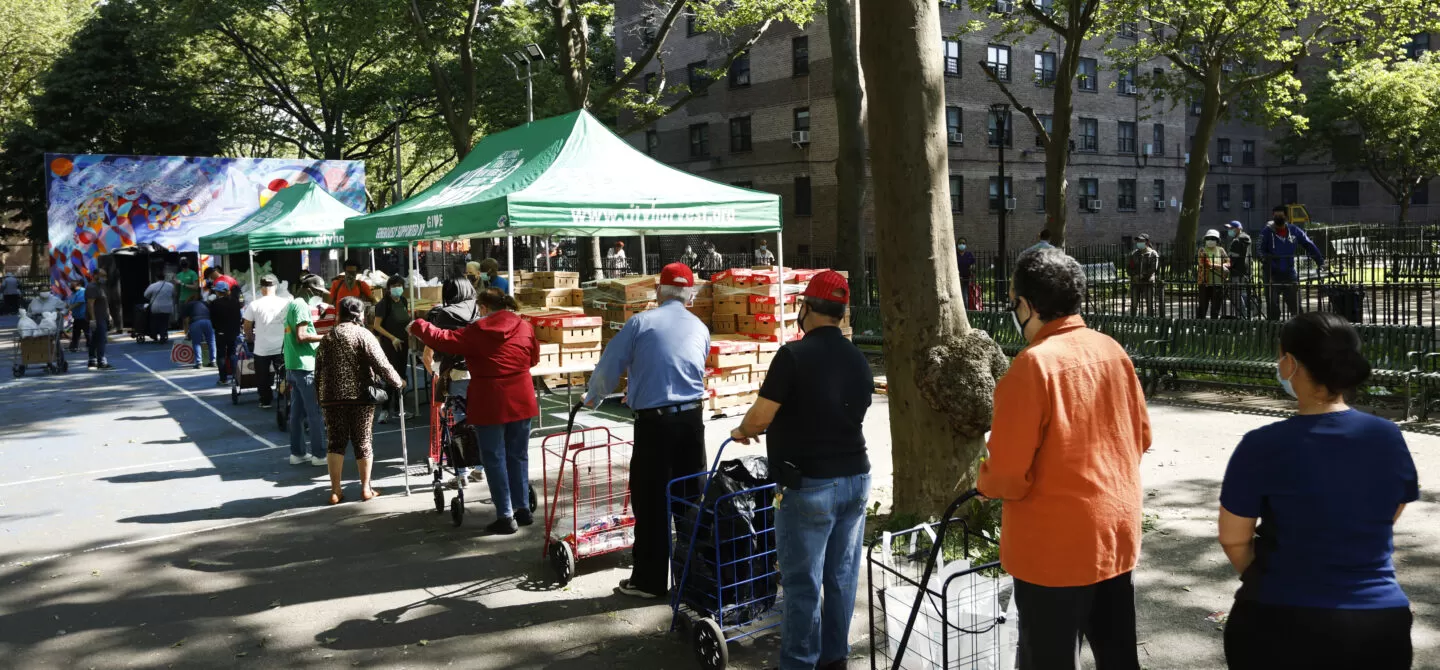
Hunger in NYC
No New Yorker should have to worry about where their next meal will come from.
Visits to New York City soup kitchens and food pantries are currently at record high levels. Food, childcare, and housing costs are extremely high amid an affordability crisis in our city, making it hard for our neighbors to buy the nutritious food their families need to thrive. And as recent historic cuts to federal food assistance go into effect, we know that even more New Yorkers will need to visit food pantries in order to put food on the table.
Most New Yorkers—67%—who visit food pantries have a job, sometimes two or three, a sign that wages are not keeping up with the cost of living. Food is what’s known as an elastic expense: You can’t “cut down” on rent or hospital bills, but you can visit a food pantry to stretch your limited budget further. A household may experience food insecurity for a brief period of time (for example, while a parent is between jobs) or for much longer (for example, a senior living on a fixed income). City Harvest is committed to being here—rescuing fresh produce and delivering it for free to New Yorkers across the five boroughs—for as long as we are needed.
-
50%
of working-aged households in New York City are struggling to make ends meet
That’s nearly 3 million people who do not make enough to afford basic fixed expenses like rent, utilities, and medical bills, according to the True Cost of Living report released by The Fund for New York City and United Way for New York City in partnership with City Harvest.
-
1.4 M
New Yorkers are experiencing food insecurity
Too many of our neighbors are experiencing food insecurity—particularly in the marginalized communities that have been disproportionately harmed by decades of policy inequities and systemic failures and that City Harvest has long served. No New Yorker—no matter who they are or where they come from—should have to worry about where their next meal will come from.
-
1 in 4
children in New York City is experiencing food insecurity
While economic challenges hit every corner of New York City, the effect on families with children has been particularly pronounced. Over the past year, average monthly visits to food pantries, soup kitchens, and community food programs across the five boroughs by families with children jumped 89% compared to 2019.
-
67%
of food pantry visitors in NYC are employed
Research from Robin Hood and Columbia University shows that most people that visit food pantries have a job, a reflection of the extreme unaffordability of our city.
-
46 M
visits to NYC soup kitchens, food pantries, and community food programs last year
That’s compared to 25 million in 2019, according to a City Harvest analysis of FeedNYC data. Pantry visits spiked during the pandemic—and have only increased since then.
-
85%
increase in monthly visits to NYC food pantries and soup kitchens since 2019
According to a City Harvest analysis of FeedNYC data, average monthly visits to soup kitchens and food pantries across the city are up 85% compared to pre-pandemic levels.

From Our Participants
Desirae, a community member who visits City Harvest’s Sunset Park Mobile Market® in Brooklyn:
“[The Mobile Market] is such a big help. I’m a single mom, I have a son with Down syndrome. [The Mobile Market] is such a blessing. It helps me have money for my MetroCard, or if my son is going on a trip, I have that extra money. Sometimes they go to the aquarium, and the aquarium is not cheap at all.”
Miguel, a community member who visits City Harvest’s Queensbridge Market® in Queens:
“I’m grateful for [City Harvest] because prices are so high, and I’m trying to do the best I can. I’m retired, my wife is retired. Bills are high. Somewhere along the line, something has to give. I do my best to stay afloat. City Harvest, they’re angels. They’re always there for us.”